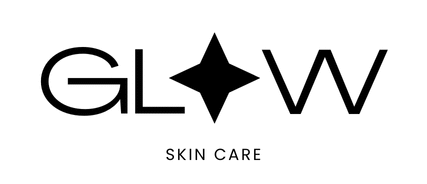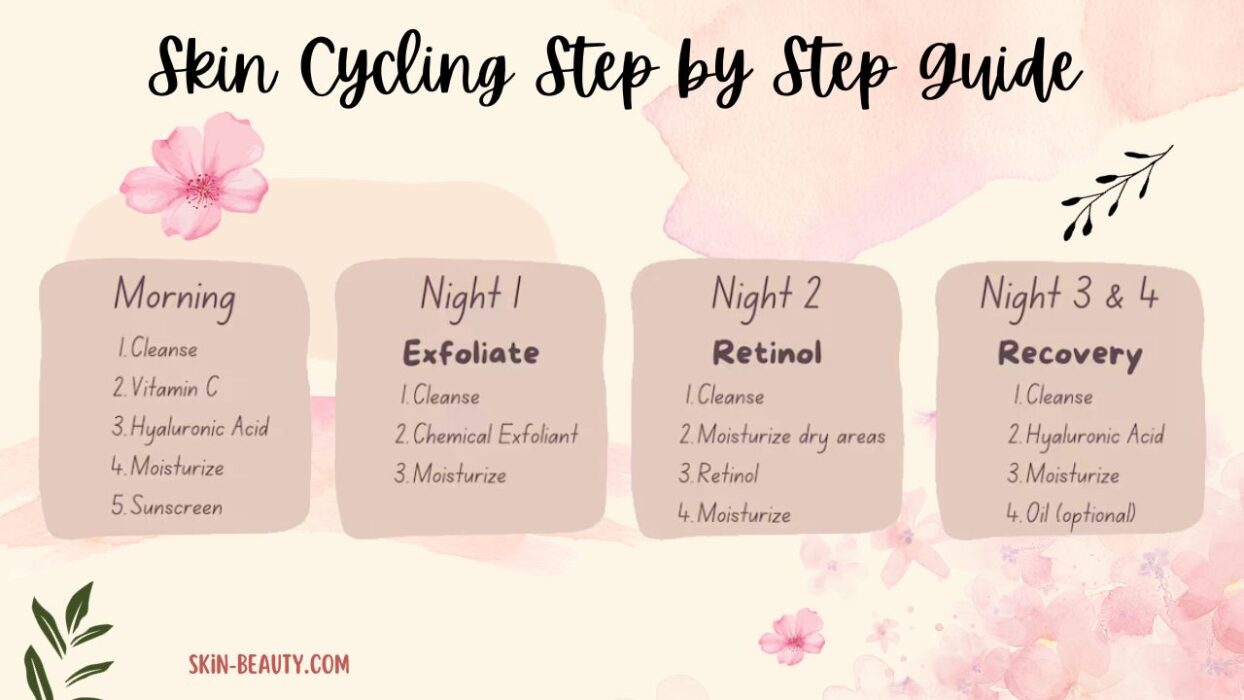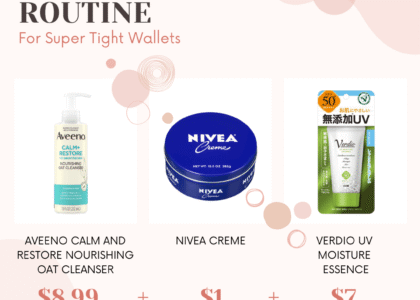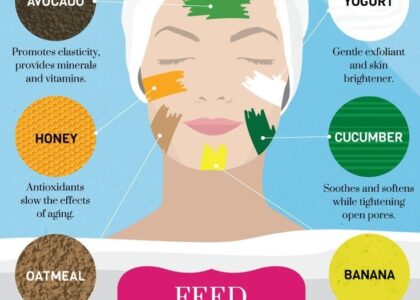In the ever-evolving world of skincare, new routines and hacks emerge almost daily—but few have gained as much momentum as skin cycling. Popularized on TikTok and endorsed by dermatologists, skin cycling promises healthier skin with less irritation, especially for those using active ingredients like retinol or exfoliants.
But is it truly effective, or just another passing trend?
In this blog, we’ll break down what skin cycling is, how it works, and whether it’s really worth the hype.
What is Skin Cycling?
Skin cycling is a skincare method that involves rotating your active ingredients in a 4-day cycle to give your skin time to rest and repair. The goal is to maximize results from potent actives like retinol and acids—without overwhelming your skin barrier.
The Classic 4-Night Cycle:
| Night | Routine | Purpose |
|---|---|---|
| Night 1 | Exfoliation | Remove dead skin cells and prep skin |
| Night 2 | Retinoid | Stimulate cell turnover and collagen |
| Night 3 | Recovery | Soothe and hydrate |
| Night 4 | Recovery | Restore skin barrier with moisturizers |
After Night 4, you repeat the cycle.
The Benefits of Skin Cycling
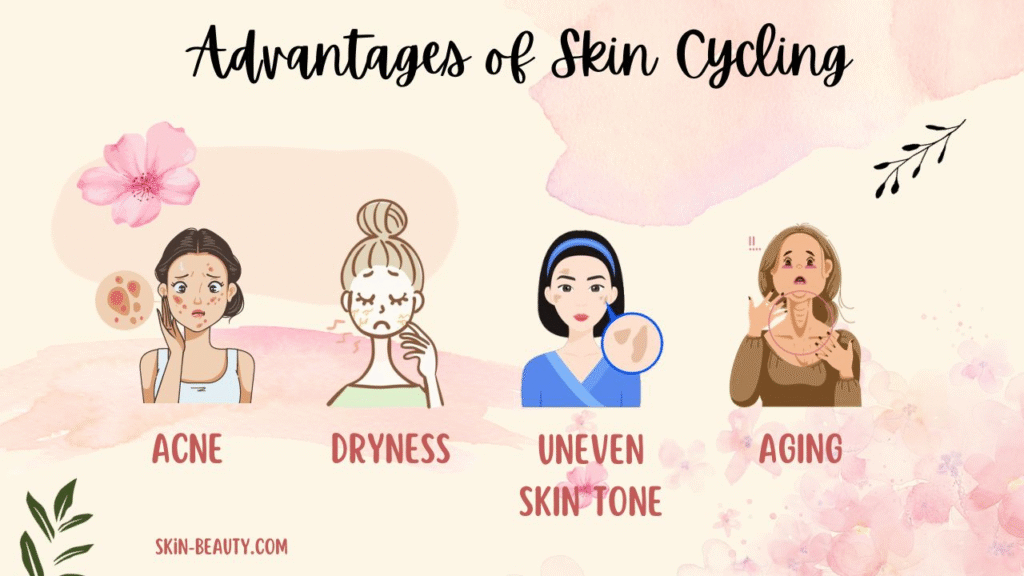
1. Minimizes Irritation
If you’ve experienced redness, dryness, or peeling from using too many actives, skin cycling helps prevent overuse by building in recovery nights.
2. Improves Product Efficacy
Exfoliating before retinoid night allows better penetration of active ingredients, making your products work more effectively.
3. Strengthens the Skin Barrier
The two recovery nights prioritize hydration and barrier repair, which can improve overall skin health and resilience.
4. Easy to Follow
Unlike complex 10-step routines, skin cycling is simple and structured, making it ideal for beginners and busy individuals.
Is There Science Behind It?
While the term “skin cycling” is relatively new, the principles behind it are well-supported by dermatological science:
- Exfoliation (Night 1): Helps clear dead skin and enhances absorption
- Retinoids (Night 2): Proven to reduce fine lines, acne, and pigmentation
- Recovery (Nights 3 & 4): Essential for repairing the barrier, especially with active use
🧪 In short: Skin cycling organizes proven methods into a manageable, skin-friendly structure.
Is Skin Cycling Right for You?
Skin cycling works well for many people, but especially for:
Ideal For:
- Beginners starting actives (like retinol or AHAs/BHAs)
- People with sensitive or reactive skin
- Those struggling with irritation or inconsistent results
May Not Be Necessary For:
- Those with highly tolerant, resilient skin who can handle daily actives
- Advanced users following custom routines advised by dermatologists
What Products Should You Use?
Night 1: Exfoliation Night
- Cleanser
- AHA/BHA exfoliant (e.g., glycolic acid, salicylic acid)
- Gentle moisturizer
Tip: Avoid layering with other actives.
Night 2: Retinoid Night
- Cleanser
- Retinol or prescription-strength retinoid
- Moisturizer (use sandwich method if needed for sensitivity)
Nights 3 & 4: Recovery Nights
- Hydrating cleanser
- Barrier-repair serum or essence (optional)
- Rich moisturizer with ceramides, peptides, or squalane
Bonus: Add a nourishing face oil or overnight mask.
Can You Customize the Cycle?
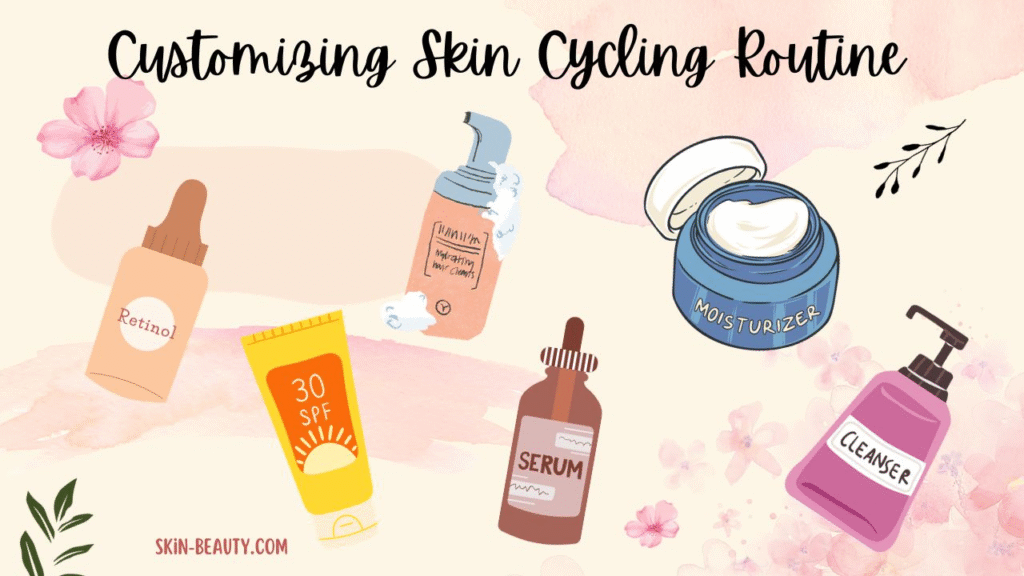
Yes! Here’s how to adjust based on your skin type:
- Dry/Sensitive Skin: Extend recovery phase to 3–4 nights
- Oily/Acne-Prone Skin: Add an extra exfoliation night if tolerated
- Experienced Users: Try a 3-night cycle (Exfoliate → Retinoid → Recovery)
So, Is It Worth the Hype?
Yes—if you’re looking for structure, balance, and better skin tolerance.
Skin cycling isn’t revolutionary in terms of ingredients, but it’s an intelligent, low-risk method that helps you get the most out of your skincare with minimal irritation.
It also encourages skin awareness—paying attention to how your skin reacts rather than blindly applying products.
It’s not just a trend. It’s a thoughtful, sustainable approach to active skincare.
Final Thoughts
Skin cycling might just be the most practical skincare trend of the decade. By building in intentional rest days, it supports your skin’s natural rhythm and prevents common issues caused by product overload.
Whether you’re a beginner or just tired of overdoing it, skin cycling offers a path toward glowier, healthier skin—without the guesswork.
TL;DR: Quick Skin Cycling Guide
| Night | Product Focus | Examples |
|---|---|---|
| Night 1 | Exfoliant | Glycolic Acid, Lactic Acid, Salicylic Acid |
| Night 2 | Retinoid | Retinol, Retinaldehyde, Tretinoin |
| Nights 3–4 | Recovery | Ceramide Cream, Hyaluronic Acid, Peptides |

